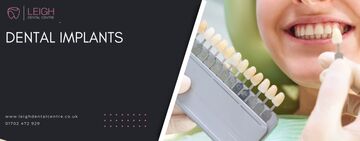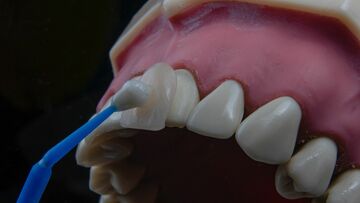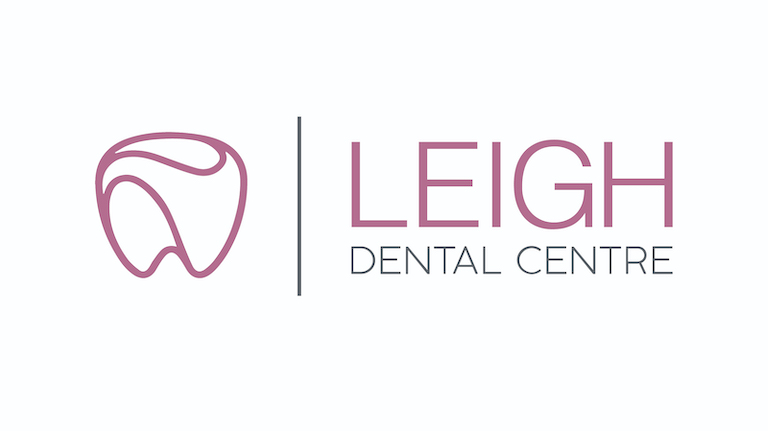
A gap in your smile can damage your confidence, make it more difficult to chew and even have a negative impact on your remaining teeth. There are many reasons to consider replacing a missing tooth, and not all of them are aesthetic reasons.
Leaving a gap in your smile will put additional pressure on the surrounding teeth. And without the missing tooth there for support, the remaining teeth can shift out of alignment as a result. The opposing tooth may also suffer and become loose, as it will no longer have the force of the opposing tooth to push against it.
If the missing tooth is a molar, you might favour chewing on the other side. This can lead to bone loss in the side of the missing tooth, as the teeth will not be used as they are intended. As a result, you could have facial asymmetry as the muscles and bone structure on the side of the missing tooth weaken.
If you have a missing tooth, it’s a good idea to think about replacement options. It’s tempting to leave a gap in your smile if it isn’t in a very visible spot, but this isn’t always advisable. In the very young, the teeth might shift to close the gap – particularly if there is already overcrowding – but as you get older, the chances of this happening will greatly reduce.
Thankfully, there are many replacement options you can consider for a missing tooth. In this guide, we will explore the main options available to you and what is involved in the treatment plan. We’ll also look at the long-term implications of these choices.

Dental implants
A single dental implant is the only tooth replacement option that will feel and function like a natural tooth. A small titanium implant is placed in the jaw where it fuses with the bone. This is then used to support an artificial tooth crown. For more than one missing tooth, it could also be combined with a bridge. This is the most expensive option but also the most long-lasting option.
A dental implant should last a lifetime with the right care, so it can offer patients a fresh start following tooth loss. There are many benefits to this type of restoration. In particular, dental implants can help to prevent bone loss in the jaw. When the jaw is not used, the bone can recede leading to facial asymmetry and a sunken appearance.
Dental implants also function like a natural tooth by distributing the force of your bite into the jaw bone rather than onto the surrounding teeth. This will help to ensure that no foods are off limits and you can eat a varied diet.

Dental bridge
Another popular choice for missing teeth is a dental bridge. A bridge includes one or two crowns with one or more artificial teeth in the middle, also known as a pontic. This is ideal for those who do not want to have more extensive treatment with dental implants. It’s also ideal if you are missing teeth and have damaged teeth on either side of the missing teeth. The crowns will help to protect and strengthen the surrounding teeth.
If the surrounding teeth are very healthy, your dentist may opt to support the artificial tooth with small metal wings that attach to the rear of the teeth. This method requires less preparation of the surrounding teeth.
There are many benefits to a dental bridge, and the most obvious is that it is a very fast and minimally invasive procedure. You can have this treatment completed in just two visits to the dentist.
The disadvantages are that the force of your bite will be distributed between the surrounding teeth, which can put additional pressure on these teeth. You will need to be very attentive about keeping your teeth clean and healthy to ensure this doesn’t become problematic further down the line.

Denture
When we talk about dentures, most people think we mean a full mouth of false teeth. But it is also possible to have just a few teeth on a denture. These can be attached to a base plate which fits over the gums, or they can be attached to the surrounding teeth using small metal clips.
A denture is removable, so it’s the least invasive option of them all. You will need to take it out to clean it and then care for the teeth around it. You’ll need to wear denture adhesive to keep it in place. One of the disadvantages of a denture is that it could slip or become uncomfortable.
Since the denture is removable, there is also the risk that you could lose it. If you are forgetful or likely to lose things, this might not be the right option for you.

Leave the gap
Some people choose to leave a gap in their smile, which is very common if you are on a budget and don’t have the option to choose cosmetic or restorative treatment. A gap in your smile could change your face shape over time, so you’ll need to think about the long-term impact.
A gap in your smile could also lead to issues with the surrounding and opposing teeth. They might shift out of alignment to fill the gap, and this could lead to tooth loss down the road. The opposing teeth can also become loose as they will no longer have anything to oppose your bite, which can cause the bone to recede.
In some cases, the teeth may shift to close the gap, but this isn’t common without the help of orthodontics.
Closing thoughts
You don’t have to live with a gap in your smile. If you are concerned about the impact of a missing tooth on your smile, the best option is to book a consultation to explore your options. We can share the best solutions for your needs so you can make an informed choice about which treatment is right for you.
Contact us to make an appointment
Exclusive Offer
Airflow stain removal from our hygienist


Composite Bonding – Is it a Good Idea?
22.11.2023

What are Veneers and How Do They Work?
22.11.2023

Teeth Straightening – is it for you?
12.08.2016
Time for you perfect smile?
Book your consultation today
When visiting our practice you know you are visiting the dental professionals trained to the highest standards. You are greeted by our welcoming staff, who share the same aim, to make your visit with us as comfortable and stress free as possible.




